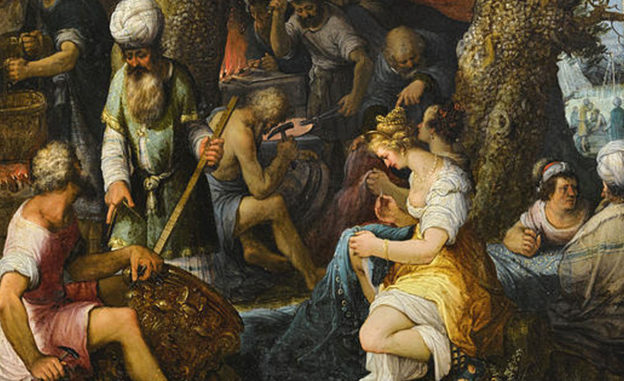Like many of you, I was disappointed to learn that Transmission Gully was not opening for Christmas 2021. The stories of what has gone right and wrong on it are legion, and my neighbour (who is involved) has told me a few choice tales. For someone who finds these big construction projects fascinating, it is choice fodder for me.
In Exodus 36:8-38 we see a rather more successful building project get underway. The Israelites built the Tabernacle, where God would dwell with them. But this tent looked forward to something far greater – the tabernacling of God with us in Jesus, so that God could build the Church through the Holy Spirit, the dwelling place of God with us today.
When Moses descended from Mount Sinai, he commissioned Oholiab and Bezalel, assisted by talented men and women from Israel, to begin construction. The wider people of Israel, almost “to a man”, brought the necessary supplies and materials to begin construction.
Right on time, construction commenced. “All the craftsmen among the workmen made the tabernacle with ten curtains” (v.8) in accordance with the detailed plans set out by God (vv.8-13). God previously laid out the construction plans in chapter 26.
The portions of the tabernacle closest to God’s presence were the finest and most ornate of those prepared, with cherubim artistically woven into the tent fabric. When God came to dwell with his people, it would remind him of his “home” in Heaven.
Because the fabric which made the tabernacle was so precious, it needed layers of protection around it. This was accomplished by a layer of fabric woven from goats’ hair, rams skins, and a waterproof layer of goatskin fabric (vv.14-20). This ensured that the elements, whether the beating sun or the pouring rain, would not destroy the beautiful work inside or the furniture that they would make to fill it.
These four layers of fabric were heavy, and so a solid frame was needed to hold it up. Craftsmen constructed forty-eight wooden poles from acacia wood, with crossbars that connected them with mortise and tenon joinery. Then, to make it fit for divinity, covered these wooden poles and crossbars with gold (vv.20-34). Bases for the poles, which touched the earth, were made of silver.
Finally, a veil was made to separate the Most Holy Place in the Tabernacle from the rest of the tent (vv.35-38). Because it was the way by which the High Priest entered once a year into God’s presence, the veil also had cherubim woven into it to remind the High Priest that he was entering into the Most Holy ground.
If you compare the construction works in this chapter to chapter 26, you see that everything was constructed exactly as God commanded. There were no creative deviations or material substitutes. What God commanded, Israel constructed. One commentary I looked at stated that this passage contained “no new information and no surprising changes or omissions”. No surprise then that we are sorely tempted to hit fast-forward on this chapter.
But something important was happening here. God’s people were creating the place where God was going to come and dwell with them. The breach at the Fall, when Adam and his descendants could no longer walk and talk with God in Eden in the cool of the day, was symbolically if imperfectly being repaired.
But something more perfect was to come. A tent, then a temple, where God was largely cut off from his people because of their sin was still “suboptimal” compared to The Garden. So God the Son “became flesh and dwelt among us” (John 1:14). Literally in Greek he “tabernacled” with us.
And Jesus, who is the fuller and truer tabernacle of God dwelling with us lived a perfect life of holiness and devotion to God, then suffered on the Cross as a perfect sacrifice for sin so the veil of the Temple could be torn (Mark 15:38) and access to God restored.
To prove he was the true temple of which Jesus himself said “Destroy this temple, and in three days I will raise it up”, Jesus rose from the dead on the third day (John 2:19-22) so we too have the hope of the resurrection to look forward to.
But wait, there’s more! God is still working to build a temple today. The Church is now the temple of the Holy Spirit, the dwelling-place of God with his people here on earth until he returns (Ephesians 2:19-22, 1 Corinthians 6:19). While Oholiab, Bezalel & Co finished their work, God is still busy with his own temple building project.
As beautiful as the Tabernacle must have been, it is nothing as compared to what God the Master Builder can achieve. And so there is hope for us in this world of sin. If we rest in Christ for the forgiveness of our sins, God will be present with us through the Holy Spirit, and incorporate us into his temple to dwell with us.
And one day, we will enjoy God’s presence even more fully.


